10.30.20
Hello Friends-
HEAD AND NECK:
Limited images of the brain demonstrate no focal asymmetric activity
to suggest metastatic disease. There is no midline shift or mass
effect within the calvarium. Please note PET/CT is suboptimal for
evaluation of intracranial metastatic lesions given intense
physiologic activity. Consider MRI of the brain to assess for brain
lesions, if clinically indicated. Last MRI brain 6/30/2020. Mild
heterogeneous activity of the clivus with limited evaluation due to
intense adjacent brain activity.
No hypermetabolic cervical lymphadenopathy is identified. Activity
of the vocal cords most likely phonation during FDG uptake. Bilateral
stable activity of the thyroid gland with SUV peak of 3 on the left
and 2.6 on the right.
CHEST:
The interval increase in size of the growth from the anterior aspect
of the right third rib expansile lesion now measuring 6.6 x 5.1 x 6.5
cm, compared to 3.5 x 2.8 cm on PET/CT from 5/7/2019. There is
circumferential increase in FDG activity with stable SUV peak of 4.4;
however, there is a low density center currently which is photopenic
on PET consistent with necrosis.
Interval increase in prominence of soft tissue nodule involving right
posterior third rib which now protrudes into the lung parenchyma
measuring 2.5 x 0.8 cm with SUV peak of 2.3 compared to 1.7
previously.
There is abnormal activity corresponding to pleural-based nodule
between the left 6th and 7th ribs posteriorly measuring 1.2 cm with
SUV peak of 2.8
Small bilateral pleural effusions. No hypermetabolic lymphadenopathy
in the mediastinum. No hypermetabolic lymphadenopathy in the
bilateral axilla or subpectoral regions. There is physiologic uptake
in the myocardium. No hypermetabolic focus bilateral breast
parenchyma.
Intense abnormal activity of the left sternoclavicular joint region
with SUV peak of 4.5 compared to 2.9 previously.
Incidental finding of an azygos lobe, a normal variant.
ABDOMEN AND PELVIS:
Interval development of a large mass between the liver and the right
kidney measuring 6.1 x 9.4 x 9.2 cm with SUV peak of 4.5. There is
compression of the liver and the right kidney with this mass but
there appears to be at least a partial fat plane of separation
between the mass and the liver and the right kidney. The right
adrenal gland is not definitively visualized. There is photopenia of
the low-density lesion in the periphery of the right lobe of the
liver measuring 3 x 2.5 cm and left lobe of the liver measuring 1.3 x
1.6 cm. There is a round nonspecific focus anterior aspect of the
left lobe of the liver measuring 1.3 x 1.5 cm with SUV peak of 3.3
and hepatic lesion cannot be excluded. There is heterogeneous
activity in the remainder of the liver. There is a round focus of
intense abnormal activity in the liver, just anterior to the large
right upper quadrant mass, with SUV peak of 4.4..
There is mild activity in the stomach and heterogeneous activity
throughout the bowel. There are areas of segmental increase in FDG
activity throughout the bowel. Persistent activity in the anal region
with stable SUV peak of 4.3 compared to 4.2 previously.
Incidental note of cholelithiasis. Heterogeneous activity of the
spleen. No focal abnormal activity of the left adrenal gland. The
right adrenal gland is not definitively visualized. Low-density
lesion lateral aspect of the left mid abdomen measuring 2.2 x 1.6 cm
photopenic on PET.
There is physiologic excretion of FDG in the bilateral kidneys,
ureters and urinary bladder.
MUSCULOSKELETAL:
Evaluation of the osseous structures demonstrate interval increase in
abnormal activity of the lytic lesion at the right distal right
clavicle with SUV peak of 4.2 compared to 3 previously. Interval
increase in intense abnormal activity of the left sternoclavicular
joint region with SUV peak of 4.7 compared to 2.9 previously on
PET/CT from 5/7/2019. Interval increase in diffuse activity
throughout the spine. As a reference, L4 vertebral body activity has
SUV peak of 3.8 compared to 1.7 previously. L2 spinous process
abnormal activity has SUV peak of 3.8 compared to 2.5 previously.
Heterogeneous activity of the sternum with SUV peak of 3.1 compared
to 2.2 previously. Mild heterogeneous activity of the clivus.
UPPER EXTREMITIES:
Partial visualization of the upper extremities on CT demonstrate a
small focus of activity left distal humerus with SUV peak of 1.4.
Increase in activity bilateral wrists soft tissue distribution may
represent component of degenerative changes.
LOWER EXTREMITIES:
Interval increase in size and abnormal activity along the right
proximal femur with SUV peak of 4.1 compared to 2 previously.
Abnormal focus left proximal tibia with SUV peak of 3.4. Interval
increase in size, multiplicity and FDG activity of the right proximal
tibia shaft lucent lesion measuring 2 x 1.8 cm with SUV peak of 3.4
compared to 3.2 previously.
IMPRESSION:
Restaging PET/CT demonstrates unfortunate evidence for progression of
disease with interval increase in size of the growth from the
anterior aspect of the right third rib expansile lesion now measuring
6.6 x 5.1 x 6.5 cm, compared to 3.5 x 2.8 cm on PET/CT from 5/7/2019.
There is circumferential increase in FDG activity of the mass with
stable SUV peak of 4.4; however, there is a low density center
currently which is photopenic on PET consistent with necrosis.
Interval development of a large right upper quadrant mass measuring
6.1 x 9.4 x 9.2 cm with SUV peak of 4.5 located between the liver and
the superior aspect of the right kidney. The right adrenal gland is
not visualized.
Interval increase in prominence of soft tissue nodule involving right
posterior third rib which now protrudes into the lung parenchyma
measuring 2.5 x 0.8 cm with SUV peak of 2.3 compared to 1.7
previously.
Interval increase in abnormal activity of the lytic lesion at the
right distal right clavicle with SUV peak of 4.2 compared to 3
previously.
Interval increase in intense abnormal activity of the left
sternoclavicular joint region with SUV peak of 4.7 compared to 2.9
previously on PET/CT from 5/7/2019.
Several additional osseous findings: The spine, right femur,
bilateral tibia and sternum which have increased in FDG activity
compared to prior study, as detailed above. As a reference, diffuse
activity throughout the spine. As a reference, L4 vertebral body
activity has SUV peak of 3.8 compared to 1.7 previously.

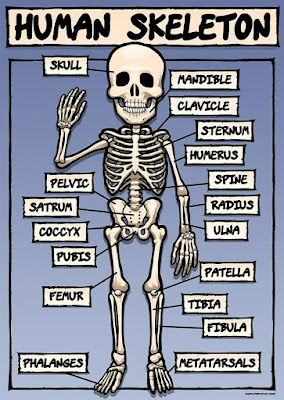
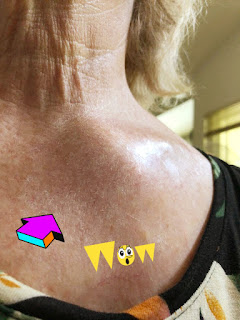
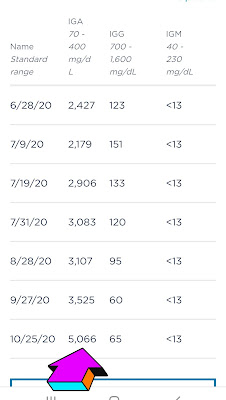
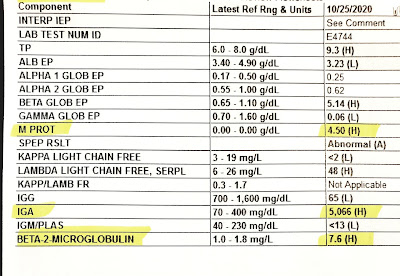
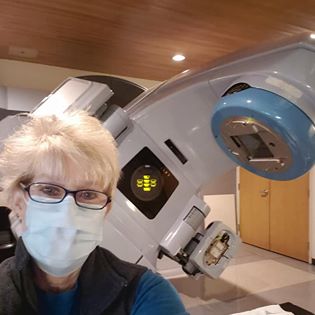
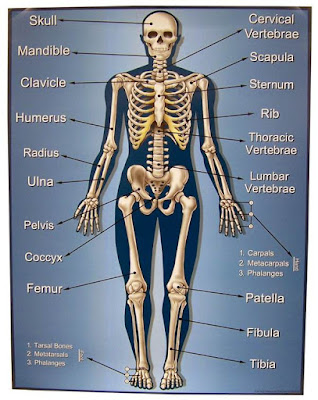
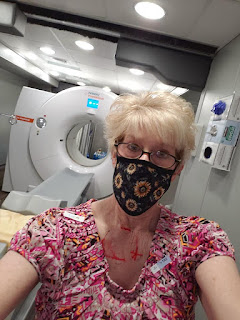
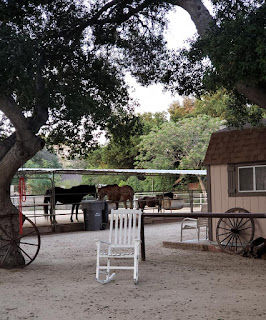

Hi Julie,
ReplyDeleteAfter reading that PET report it is understandable why you are overwhelmed. Alot to absorb! You are brave Julie and you know you have to put your fear aside and get new stronger chemo in you!!! You can do it!! So the *&%$#* myeloma slows down at the least. Maybe bumping up the steroids too will help. Praying for you always. Sending you healing hugs. oxox
Hi Bonnie, thank you so much for all your comments of support. Yes, the scan report is surreal, but I have to accept it's me, right. Thank you for thinking I am brave... I sure used to be, not so much any more. Just so tired of hurting and dealing with side effects. So may treatments I "could do", but not "brave enough to do so. Thank you friend, for all your support and correspondence xoxo
DeleteHi Julie,
ReplyDeleteA lot going on right now, isn't there? All we can really do is just put one foot in front of the other and keep going as best we can. Be gentle with yourself and lean on your supports when you need to. Hoping you find the right next step and sending my very best wishes for improvement in all test results, Bernadette
Hi Bernadette, Thank you for your kind suggestions and support. Yes, one foot, one issue at a time. So hard for all of us that were always so busy and independent, but I have been humbled, and will move forward... slowly :))
DeleteHoping your status and treatment is going well friend, and you are feeling good. That's all I want for all my MM buddies. xoxo